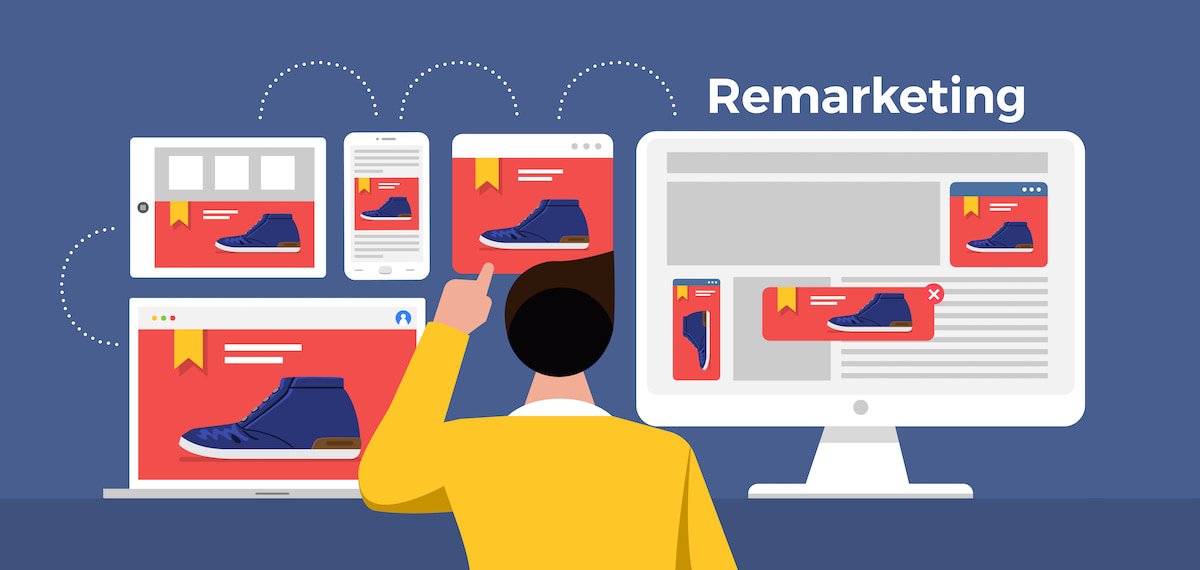In a world where attention spans are shorter than a goldfish’s memory and the average person sees 6,000 to 10,000 ads per day, cutting through the noise is no easy feat. That’s where display advertising and remarketing come into play—powerful tools that help marketers not only get noticed but also stay top-of-mind.
But are these strategies still relevant in 2025? Absolutely. In fact, they’re more important than ever. With AI-driven targeting, cross-platform integration, and evolving consumer behavior, the display advertising game is changing fast—and the brands that adapt will thrive.
In this article, we’ll break down what display advertising and remarketing are, why they matter, and how you can leverage them more effectively this year. If you’re looking to stay ahead in the online digital marketing course you just signed up for—or you’re just trying to boost ROI—this is the deep dive you’ve been waiting for.
What is Display Advertising?
Display advertising refers to visual-based ads that appear on websites, apps, or social media platforms. These ads come in various formats, such as banners, images, videos, or interactive content. They’re typically placed on sites within ad networks like Google Display Network (GDN), Meta Audience Network, or programmatic ad platforms.
Unlike search ads, which respond to user intent, display ads are designed to create demand. They’re perfect for brand awareness, product discovery, and nudging potential customers down the funnel.
What is Remarketing?
Remarketing (or retargeting) is a strategy that targets users who have previously visited your website or engaged with your content. It allows you to “follow” them around the internet and show tailored ads, keeping your brand fresh in their minds until they’re ready to convert.
There are two primary types:
-
Pixel-based remarketing – Uses a snippet of code (usually from Google Ads or Facebook) to track visitors and retarget them.
-
List-based remarketing – Targets users based on an uploaded list (email addresses, for example) that matches with platform user data.
Why Display Advertising and Remarketing Still Matter
Despite growing concerns over ad fatigue and privacy laws, these strategies are evolving—not disappearing. Here’s why they’re still key players in digital marketing:
1. Multi-Touchpoint Attribution
It takes an average of 8 touches to convert a lead. Display ads and remarketing campaigns create those vital touchpoints across the buyer’s journey, especially at the awareness and consideration stages.
2. Brand Recall and Familiarity
Remarketing boosts brand recall by up to 70%, according to studies from Criteo. That recognition plays a massive role in purchasing decisions, particularly in competitive niches.
3. Personalization and AI
Modern display campaigns are powered by AI, which enables dynamic ad creatives and intelligent bidding. Remarketing ads are now tailored based on browsing history, behavior, location, and even predicted intent—making them feel less like ads and more like nudges.
The Evolution of Display Advertising in 2025
The landscape has shifted. Here’s what’s new—and what to watch:
Programmatic Advertising Takes the Lead
Programmatic ad buying automates the process of purchasing digital ads in real-time using AI. It ensures your display ads are shown to the right people at the right time, maximizing ROI.
Stat to note: eMarketer projects that by the end of 2025, 91% of display ad spend in the U.S. will be programmatic.
Privacy-First Targeting
With the phase-out of third-party cookies (thanks to Chrome and Firefox), contextual targeting and first-party data strategies are gaining momentum. Expect increased reliance on consent-based tracking, clean rooms, and server-side tagging.
Rich Media and Interactive Ads
Static banners are losing favor. Brands are now investing in immersive experiences—360° product views, playable demos, and AR-enabled ads—to grab attention and drive deeper engagement.
How to Run a High-Impact Display Advertising Campaign
If you’re planning to launch or optimize a display campaign, here are some actionable tips:
1. Define Your Goal First
Are you aiming for awareness, traffic, or conversions? Knowing your objective will guide ad format, creative design, platform choice, and KPIs.
2. Build Custom Audiences
Use tools like Google Ads Audience Manager or Meta Custom Audiences to segment users based on behavior, demographics, and interests. Layering intent signals with demographic targeting yields better engagement.
3. Create Multiple Ad Variations
A/B test everything—headlines, CTAs, visuals, copy. Performance fluctuates dramatically based on creative elements. Tools like Google’s Responsive Display Ads make it easier to test combinations at scale.
4. Optimize for Mobile
Over 70% of display ad impressions now come from mobile devices. Prioritize fast-loading, vertical, and responsive ad creatives for smaller screens.
5. Leverage Frequency Capping
Don’t overexpose your audience. Too many impressions can annoy potential buyers. Platforms like Google Ads allow you to set frequency limits per user to prevent fatigue.
Mastering Remarketing: Tips to Win Back Visitors
Here’s how to supercharge your remarketing campaigns:
Segment Your Audiences
Don’t lump everyone into one list. Create segmented audiences based on actions (e.g., visited product page, abandoned cart, viewed pricing), and tailor your messaging accordingly.
Set Up Exclusions
Exclude users who already converted or signed up. This prevents wasted spend and shows your audience that you respect their actions.
Use Dynamic Remarketing
Platforms like Google and Meta allow you to show users ads featuring exact products they viewed. This hyper-relevance increases CTR and conversion rates dramatically.
Time It Right
Customize the duration of your remarketing lists. Shorter time windows (e.g., 7 days) work well for impulse buys, while longer durations (e.g., 30–60 days) suit higher-ticket items.
Common Pitfalls to Avoid
Even experienced marketers fall into these traps:
-
Ignoring Creative Fatigue: Refresh creatives every few weeks to prevent ad blindness.
-
Over-Retargeting: If users are seeing your ad 20+ times, it’s time to back off.
-
Not Aligning Landing Pages: A mismatched ad-to-landing page experience kills conversions. Always maintain message continuity.
-
Lack of Measurement: Failing to track ROAS, view-through conversions, and assisted conversions skews performance insights.
What the Data Says
Here are some eye-opening stats that highlight the power of display and remarketing:
-
Display ads increase branded search queries by 155% (WordStream)
-
The average CTR for display ads is 0.46%, but remarketing ads can generate up to 10x the CTR (Invesp)
-
Conversion rates improve by 50–60% with retargeting, especially in eCommerce (Adobe Digital Insights)
When to Consider a Display Strategy
Display advertising and remarketing are ideal when:
-
You have a long sales cycle and need repeated brand exposure.
-
You’re launching a new product or service and need rapid awareness.
-
Your organic or search traffic is high but conversion rates are low.
-
You’re running an online digital marketing course and want to keep potential students engaged.
Future Trends: What’s Coming Next?
Here’s what’s on the horizon for 2026 and beyond:
-
Cookieless Retargeting: Identity graphs and AI models will power anonymous yet personalized remarketing.
-
Voice and Display Integration: Voice search will sync with display ads to create cross-channel engagement.
-
CTV and OTT Expansion: Connected TV platforms will offer remarketing-like capabilities via streaming ads.
-
First-Party Data Ecosystems: Brands will build their own data vaults to fuel privacy-compliant targeting.
Final Thoughts
In the ever-evolving digital ecosystem, display advertising and remarketing remain indispensable tools for marketers who want to scale smartly, build brand memory, and convert faster. They’ve grown far beyond banner ads and cookie drops—today, they’re AI-powered, data-driven, and deeply personalized.
If you’re looking to get ahead in a cluttered marketplace—or sharpen your skills through an online digital marketing course—understanding these strategies will give you a solid edge. The key is staying agile, creative, and laser-focused on the user experience.
Because in the end, it’s not about blasting more ads. It’s about showing the right message to the right person at the right time—and doing it better than your competitors.












Leave a Reply